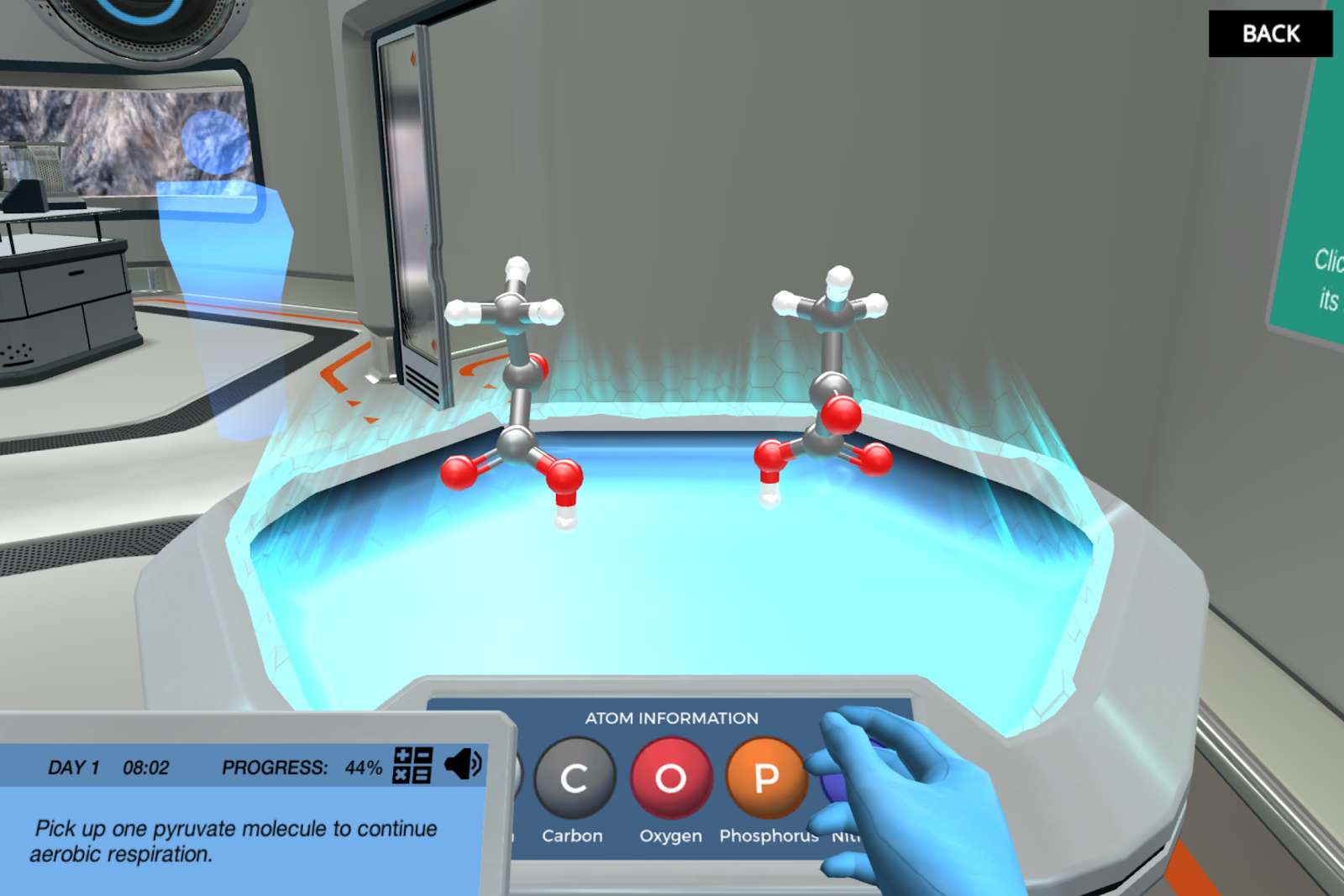Heading 1
Heading 2
Heading 3
Heading 4
Heading 5
Heading 6
Lorem ipsum dolor sit amet, consectetur adipiscing elit, sed do eiusmod tempor incididunt ut labore et dolore magna aliqua. Ut enim ad minim veniam, quis nostrud exercitation ullamco laboris nisi ut aliquip ex ea commodo consequat. Duis aute irure dolor in reprehenderit in voluptate velit esse cillum dolore eu fugiat nulla pariatur.
Block quote
Ordered list
- Item 1
- Item 2
- Item 3
Unordered list
- Item A
- Item B
- Item C
Bold text
Emphasis
Superscript
Subscript
About This Simulation
Help a basketball team learn about what happens in the second stage of cellular respiration, the Krebs cycle, to help them improve their longevity in the game!
Learning Objectives
- Explain the stages and reactions of the Krebs cycle
- State the products of the Krebs cycle
- Locate the Krebs cycle reactions within the cell
About This Simulation
Lab Techniques
Related Standards
- HS-LS1-7
- Biology 3.6 Cellular Respiration
- Biology 8.2 Cell respiration
Learn More About This Simulation
This short, targeted simulation is adapted from the full-length “Cellular Respiration” simulation.
What happens to the two pyruvate molecules after glycolysis? In this simulation, you will further your understanding of cellular respiration by taking a closer look at mitochondria and the second stage of aerobic respiration: the Krebs cycle, also known as the citric acid cycle. The council has hired you to pass on your knowledge of metabolism to the basketball team to help them understand the science behind exercise and metabolism, so they can improve their training and maintain stamina during their game.
Evaluate The Krebs Cycle
Observe how the product of the first stage of glycolysis, the pyruvate molecule, is significant for the next step of aerobic respiration, the Krebs cycle. Getting up close and personal with a giant sized mitochondrion, understand the relation of the two processes by inserting the pyruvate molecule in the matrix. You will evaluate the stages of the Krebs cycle by completing each step through an engaging and interactive activity, exploring the different components and reactions that take place.
Review your Knowledge
Throughout the simulation engaging quiz questions will be asked to reinforce your knowledge of the Krebs cycle, to further your learning of aerobic respiration and metabolism. To accompany the quiz questions there are relevant theory pages and informative diagrams to aid your learning.
Pass on your knowledge
Having learned about the second stage of aerobic respiration you are able to pass on your knowledge to the basketball players, so they too can understand the science behind metabolism and exercise and improve their training.
For Science Programs Providing a Learning Advantage
Boost STEM Pass Rates
Boost Learning with Fun
75% of students show high engagement and improved grades with Labster
Discover Simulations That Match Your Syllabus
Easily bolster your learning objectives with relevant, interactive content
Place Students in the Shoes of Real Scientists
Practice a lab procedure or visualize theory through narrative-driven scenarios


FAQs
Find answers to frequently asked questions.
Heading 1
Heading 2
Heading 3
Heading 4
Heading 5
Heading 6
Lorem ipsum dolor sit amet, consectetur adipiscing elit, sed do eiusmod tempor incididunt ut labore et dolore magna aliqua. Ut enim ad minim veniam, quis nostrud exercitation ullamco laboris nisi ut aliquip ex ea commodo consequat. Duis aute irure dolor in reprehenderit in voluptate velit esse cillum dolore eu fugiat nulla pariatur.
Block quote
Ordered list
- Item 1
- Item 2
- Item 3
Unordered list
- Item A
- Item B
- Item C
Bold text
Emphasis
Superscript
Subscript
A Labster virtual lab is an interactive, multimedia assignment that students access right from their computers. Many Labster virtual labs prepare students for success in college by introducing foundational knowledge using multimedia visualizations that make it easier to understand complex concepts. Other Labster virtual labs prepare learners for careers in STEM labs by giving them realistic practice on lab techniques and procedures.
Labster’s virtual lab simulations are created by scientists and designed to maximize engagement and interactivity. Unlike watching a video or reading a textbook, Labster virtual labs are interactive. To make progress, students must think critically and solve a real-world problem. We believe that learning by doing makes STEM stick.
Yes, Labster is compatible with all major LMS (Learning Management Systems) including Blackboard, Canvas, D2L, Moodle, and many others. Students can access Labster like any other assignment. If your institution does not choose an LMS integration, students will log into Labster’s Course Manager once they have an account created. Your institution will decide which is the best access method.
Labster is available for purchase by instructors, faculty, and administrators at education institutions. Purchasing our starter package, Labster Explorer, can be done using a credit card if you are located in the USA, Canada, or Mexico. If you are outside of North America or are choosing a higher plan, please speak with a Labster sales representative. Compare plans.
Labster supports a wide range of STEM courses at the high school, college, and university level across fields in biology, chemistry, physics, and health sciences. You can identify topics for your courses by searching our Content Catalog.















